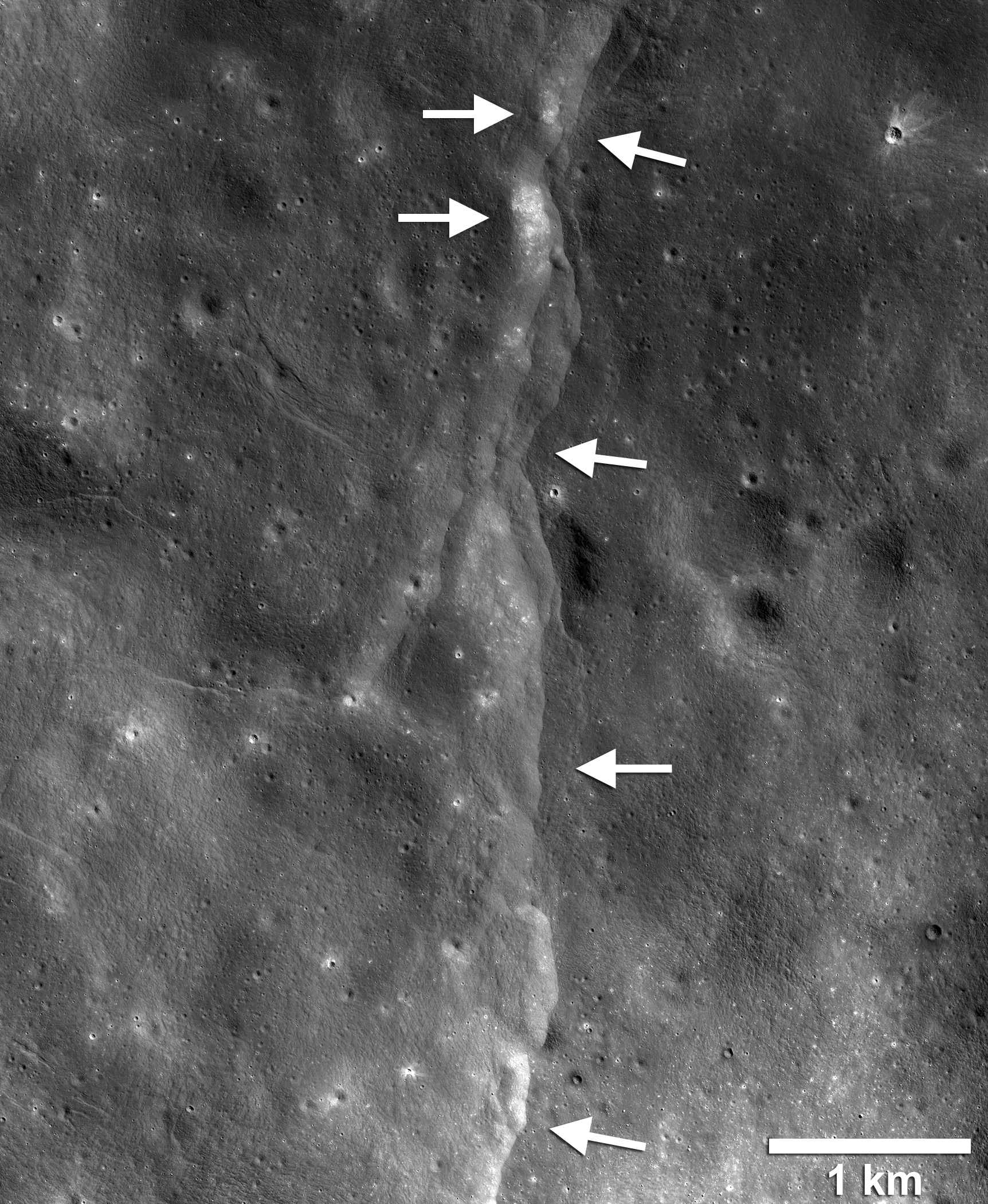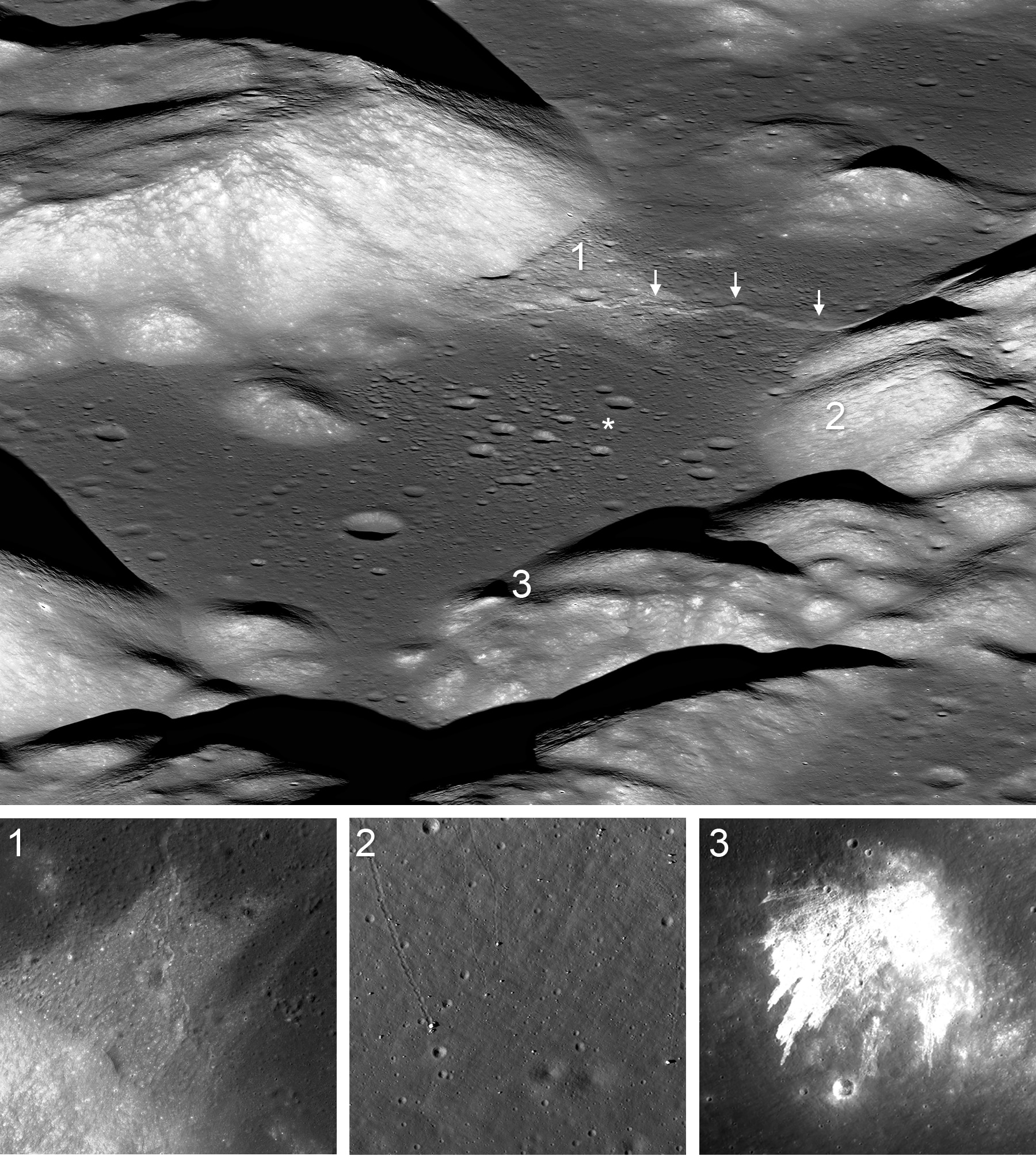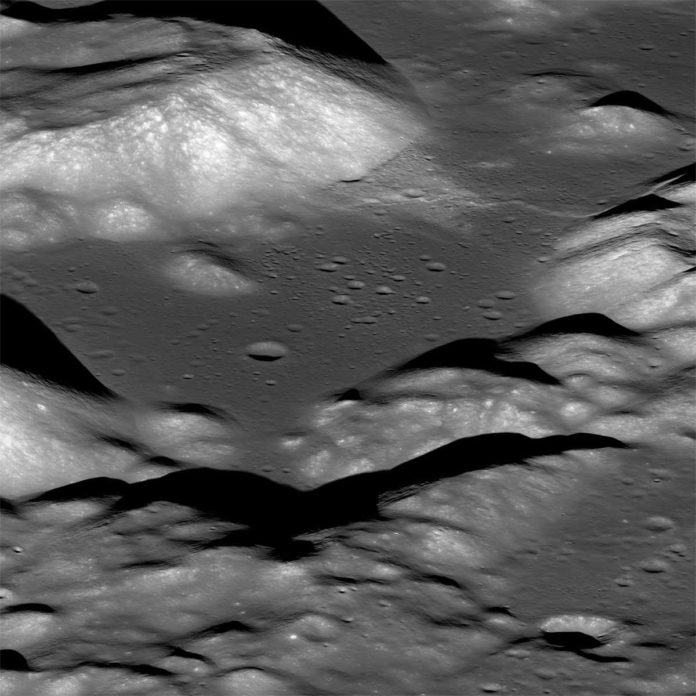NASA Lunar Reconnaissance Orbiter recently spotted wrinkles and quakes on the moon, suggesting that our moon is slowly shrinking over time.
The moon is getting smaller as its interior cools and it has become more than about 150 feet thinner over the last hundred million years. Similar to how a grape shrivels up as it shrinks into a raisin, the moon obtains wrinkles as it decreases in size. However, the moon’s surface crust is very brittle, and it breaks down as the moon shrinks, developing “thrust faults” where one area of the crust is pushed up over a nearby part.
Unlike Earth, the moon doesn’t have tectonic plates. Instead, as the moon’s interior has cooled over the last several hundred million years. According to scientists, it has caused the surface to wrinkle as it shrinks.
Thomas Watters, a senior scientist in the Center for Earth and Planetary Studies at the Smithsonian’s National Air and Space Museum in Washington said, “Our analysis gives the first evidence that these faults are still active and likely producing moonquakes today as the Moon continues to gradually cool and shrink. Some of these quakes can be fairly strong, around five on the Richter scale.”
There are now thousands of cliffs scattered across the moon’s surface, averaging a few miles long and tens of yards high. The orbiter has taken photos of more than 3,500 of them since 2009. In 1972, Apollo 17 astronauts Eugene Cernan and Harrison Schmitt had to ascend one of these cliffs, the Lee-Lincoln fault scarp, by zig-zagging the lunar rover over it.
Due to this process, the moon is 50 meter skinner. And because of shrinking, the moon actively produces moonquakes along the faults. Scientists reanalyzed the data from four seismometers placed on the Moon by the Apollo astronauts using an algorithm, or mathematical program developed to pinpoint quake locations detected by a sparse seismic network.

Credits: NASA/GSFC/Arizona State University/Smithsonian
The algorithm gave a better estimate of moonquake locations. Seismometers are instruments that measure the shaking produced by quakes, recording the arrival time and strength of various quake waves to get a location estimate, called an epicenter.
The instruments were placed on the lunar surface during the Apollo 11, 12, 14, 15, and 16 missions. Apollo 11 was active for 3 weeks only, but remaining three instruments Apollo 12, 14, 5 and 16 recorded 28 shallow moonquakes – the type expected to be produced by these faults – from 1969 to 1977.
Using algorithm, scientists detected eight of the 28 shallow quakes within the range of 30 kilometers (18.6 miles) of faults visible in lunar images. This is close enough to tentatively attribute the quakes to the faults, since modeling by the team shows that this is the distance over which strong shaking is expected to occur, given the size of these fault scarps.
The six among eight quakes happened when the Moon was at or near its apogee, the farthest point from Earth in its orbit. This is where additional tidal stress from Earth’s gravity causes a peak in the total stress, making slip-events along these faults more likely.

Credits: NASA/GSFC/Arizona State University/Smithsonian
Watters said, “We think it’s very likely that these eight quakes were produced by faults slipping as stress built up when the lunar crust was compressed by global contraction and tidal forces, indicating that the Apollo seismometers recorded the shrinking Moon and the Moon is still tectonically active.”
“We ran 10,000 simulations to calculate the chance of a coincidence producing that many quakes near the faults at the time of greatest stress and found it is less than 4 percent. Additionally, while other events, such as meteoroid impacts, can produce quakes, they produce a different seismic signature than quakes made by fault slip events.”
Additionally, one of the revised moonquake epicenters is just 13 kilometers (8 miles) from the Lee-Lincoln scarp traversed by the Apollo 17 astronauts. The astronauts also examined boulders and boulder tracks on the slope of North Massif near the landing site. A large landslide on South Massif that covered the southern segment of the Lee-Lincoln scarp is further evidence of possible moonquakes generated by fault slip events.
LRO Project Scientist John Keller of NASA’s Goddard Space Flight Center in Greenbelt, Maryland said, “It’s really remarkable to see how data from nearly 50 years ago and from the LRO mission has been combined to advance our understanding of the Moon while suggesting where future missions intent on studying the Moon’s interior processes should go.”
The researchers believe the quakes are still occurring on the moon, which means that it’s actively changing.
Co-author Renee Weber, a planetary seismologist at NASA’s Marshall Space Flight Center in Huntsville, Alabama said, “Since LRO has been photographing the lunar surface since 2009, the team would like to compare pictures of specific fault regions from different times to see if there is any evidence of recent moonquake activity. Additionally, Establishing a new network of seismometers on the lunar surface should be a priority for human exploration of the Moon, both to learn more about the Moon’s interior and to determine how much of a hazard moonquakes present.”
The study was published May 13 in Nature Geoscience.
